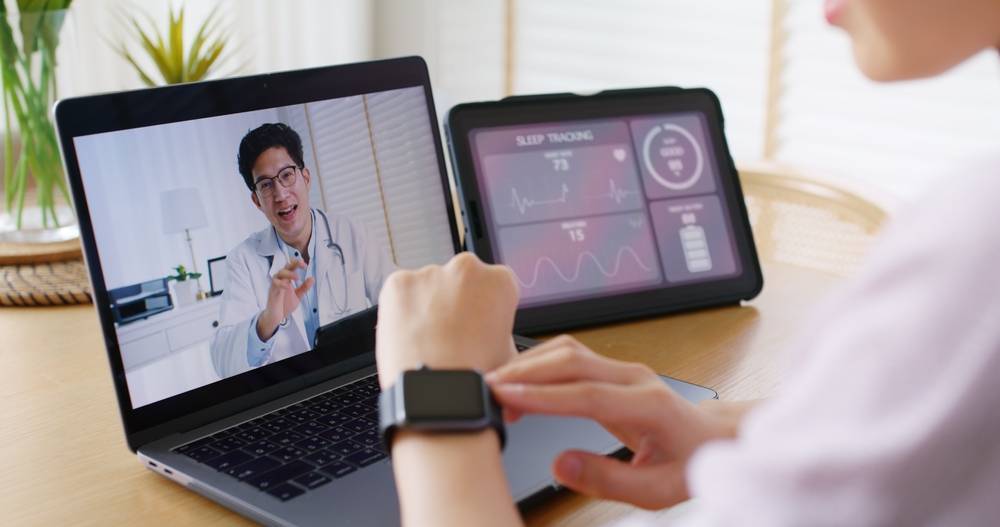Discover how telemedicine is improving access, reducing costs, and enhancing the quality of care for patients and doctors.
The benefits of telemedicine extend to both patients and doctors, significantly enhancing healthcare efficiency and accessibility. This article explores the multifaceted advantages of telemedicine, including improved access, cost-effectiveness, and enhanced quality of care, along with increased patient satisfaction and professional development for doctors.
Improved Access to Healthcare
Telemedicine significantly improves access to healthcare services, particularly for patients in remote or rural areas who face challenges reaching medical facilities. It enables patients to consult specialists without the need for long-distance travel, bridging geographical gaps and ensuring timely, specialised care.
Studies show that telemedicine reduces barriers to accessing specialist care, thereby improving health outcomes for patients in underserved regions. This accessibility is especially beneficial for individuals with mobility issues or chronic conditions that require regular monitoring.
Cost-Effectiveness
Telemedicine is a cost-effective solution that reduces healthcare expenses in several ways. By decreasing the need for hospital stays and minimising travel costs for patients, telemedicine offers significant financial benefits.
Studies indicate that telemedicine can lead to significant savings in healthcare costs while maintaining or improving the quality of care. For instance, in a pharmacist-managed clinic, telemedicine reduced the no-show rate by 12.09% and increased reimbursement by $20.46 per appointment. Additionally, the implementation of telemedicine in neurology clinics restored over 90% of pre-pandemic patient volumes within six weeks, demonstrating its cost-saving potential.
Benefits of Telemedicine: Enhanced Quality of Care
Telemedicine enhances the quality of care by enabling continuous monitoring and timely interventions, especially for chronic conditions such as diabetes and cardiovascular diseases.
Studies have shown that telemedicine improves health outcomes by allowing healthcare providers to closely monitor patients’ conditions and intervene promptly when necessary.
This approach is particularly beneficial for patients with mobility issues or severe illnesses who might find frequent hospital visits challenging. Telemedicine facilitates home-based care and remote consultations, ensuring that patients receive consistent, high-quality care tailored to their specific needs. This method has been effective in improving 87.5% of health resource utilisation outcomes, 85% of patient outcomes, and 100% of provider outcomes.
Increased Patient Engagement and Satisfaction
One of the significant benefits of telemedicine is the increase in patient engagement and satisfaction. Patients report higher satisfaction due to the convenience of accessing healthcare from their homes and reduced waiting times.
Telemedicine allows patients to have appointments without the stress of commuting or waiting in crowded waiting rooms. This convenience is particularly valued by patients with busy schedules or those living in remote areas. Additionally, telemedicine platforms often provide educational resources and self-management tools, empowering patients to take an active role in their healthcare.
Studies have shown that patients are more likely to engage in their treatment plans and adhere to medical advice when they have easier access to healthcare services. A study found that telemedicine increased patient satisfaction rates significantly, with many patients preferring virtual visits over traditional in-person appointments due to the flexibility and reduced waiting times.
Professional Development for Doctors
Telemedicine offers numerous benefits for doctors, including opportunities for continuous education and professional development. This technology enables healthcare professionals to stay updated with the latest medical advancements through online courses and virtual conferences. Furthermore, telemedicine supports collaboration and knowledge sharing among doctors, enhancing overall healthcare quality.
Studies indicate that telemedicine has facilitated increased flexibility for healthcare providers, allowing shorter times to appointments and on-time appointments in 87% of telemedicine encounters.
This flexibility helps doctors manage their time more effectively and balance their professional and personal lives.
Benefits of Telemedicine Post COVID-19
The COVID-19 pandemic significantly accelerated the adoption of telemedicine, highlighting its critical role in providing healthcare services while minimising infection risks.
Reduced Spread of Infection
Telemedicine played a crucial role in reducing the spread of COVID-19 by minimising the need for in-person visits. For instance, NYU Langone Health reported an increase from 102.4 daily telemedicine visits to 801.6 daily during the pandemic, a 683% increase.
By reducing physical contact, telemedicine helped enforce physical distancing and infection control measures, protecting both patients and healthcare providers from potential exposure to the virus.
Improved Access to Healthcare Post COVID-19
The pandemic underscored the importance of telemedicine in maintaining healthcare accessibility, especially during lockdowns and travel restrictions. Telemedicine usage increased by over 4000% at NYU Langone Health, with non-urgent care virtual visits rising from an average of 95 daily pre-COVID-19 to 4,209 post-COVID-19 expansion.
This dramatic increase ensured continuous care for patients in remote areas and those with mobility issues, allowing specialists to reach patients who would otherwise face significant barriers to accessing care. In paediatric cardiology, telemedicine visits compensated for the drop in in-person visits, allowing ambulatory care to continue at 88% of pre-pandemic levels.
Benefits of Telemedicine on Cost-Effectiveness Post COVID-19
Telemedicine has demonstrated significant cost-effectiveness during the COVID-19 pandemic. It reduces costs for both patients and healthcare systems by cutting down on travel expenses, reducing hospital stays, and optimising resource allocation. For example, in a pharmacist-managed clinic, telemedicine reduced the no-show rate by 12.09% and increased reimbursement by $20.46 per appointment.
Additionally, the implementation of telemedicine in neurology clinics restored over 90% of pre-pandemic patient volumes within six weeks. These examples illustrate how telemedicine can lead to substantial savings in healthcare costs while maintaining or improving the quality of care.
Enhanced Quality of Care Post COVID-19
Telemedicine has proven effective in managing chronic conditions, providing timely interventions, and ensuring continuity of care for vulnerable populations during the pandemic. Research shows that telemedicine was effective in improving 87.5% of health resource utilisation outcomes, 85% of patient outcomes, and 100% of provider outcomes.
Studies found no significant difference in patient satisfaction and patient-reported outcomes between telemedicine and in-person follow-ups for shoulder surgery, indicating comparable quality of care. Telemedicine has facilitated remote monitoring and follow-ups, improving patient outcomes and satisfaction.
The Growing Benefits of Telemedicine
Telemedicine significantly benefits both patients and doctors by improving access to care, reducing costs, enhancing care quality, increasing patient satisfaction, and supporting professional development.
As telemedicine continues to evolve, its role in modern healthcare is poised to expand, offering even greater benefits for patients and healthcare providers alike.
The rise of telemedicine has heightened the need for effective digital marketing. As more patients seek care online, clinics and practices must be available online to reach these audiences. If you are a healthcare provider and want to learn more about digital marketing strategies for your practice, register today for the Connecting Care With Clicks Conference happening on 12 October 2024 (Saturday), for a full day of learnings and networking with industry experts in digital healthcare marketing. CPD points pending.
References
Mann, D. M., Chen, J., Chunara, R., Testa, P. A., & Nov, O. (2020a). COVID-19 transforms health care through telemedicine: Evidence from the field. Journal of the American Medical Informatics Association, 27(7), 1132–1135. https://doi.org/10.1093/jamia/ocaa072
Jalali, M. S., Landman, A., & Gordon, W. (2020). Telemedicine, Privacy, and Information Security in the Age of COVID-19. SSRN Electronic Journal. https://doi.org/10.2139/ssrn.3646320
Mehrtens, K. M., Krishnan, A., Moak, J. P., Sable, C. A., Selekman, R., Berul, C. I., Hovis, I., Helmandollar, C., Pender, T. A., Safo, C., Arroyo, C., Becker, J. A., Munoz, R. A., & Harahsheh, A. S. (2020). Abstract 15660: Impact of Telemedicine on Pediatric Cardiac Center’s Ambulatory Response to the 2019 Novel Coronavirus Disease (covid-19) Pandemic. Circulation, 142(Suppl_3). https://doi.org/10.1161/circ.142.suppl_3.15660
Marte, F., Bianco, J., Martinez, A., & Carris, N. (2023). Impact of a Pharmacist-Managed Telemedicine Pharmacotherapy Clinic in the Era of COVID-19. Journal of Pharmacy Practice. https://doi.org/10.1177/08971900231210156
Fonkem, E., Gatson, N. T., Tadipatri, R., & Azadi, A. (2020). COVD-14. TELEMEDICINE REVIEW IN NEURO-ONCOLOGY: COMPARATIVE EXPERIENTIAL ANALYSIS FOR BARROW NEUROLOGICAL INSTITUTE AND GEISINGER HEALTH DURING THE 2020 COVID-19 PANDEMIC. Neuro-Oncology, 22(Supplement_2), ii23. https://doi.org/10.1093/neuonc/noaa215.097
Sabbagh, R., Shah, N., Jenkins, S., Macdonald, J., Foote, A., Matar, R., Steffensmeier, A., & Grawe, B. (2021). The COVID-19 pandemic and follow-up for shoulder surgery: The impact of a shift toward telemedicine on validated patient-reported outcomes. Journal of Telemedicine and Telecare, 29(6), 484–491. https://doi.org/10.1177/1357633×21990997
Pennington, Z., Michalopoulos, G. D., Biedermann, A. J., Ziegler, J. R., Durst, S. L., Spinner, R. J., Meyer, F. B., Daniels, D. J., & Bydon, M. (2022). Positive impact of the pandemic: the effect of post–COVID-19 virtual visit implementation on departmental efficiency and patient satisfaction in a quaternary care center. Neurosurgical Focus, 52(6), E10. https://doi.org/10.3171/2022.3.focus2243
Betancourt, J. A., Rosenberg, M. A., Zevallos, A., Brown, J. R., & Mileski, M. (2020). The Impact of COVID-19 on Telemedicine Utilization Across Multiple Service Lines. https://doi.org/10.20944/preprints202008.0422.v1
Perrone, G., Zerbo, S., Bilotta, C., Malta, G., & Argo, A. (2020a). Telemedicine during Covid-19 pandemic: Advantage or critical issue? Medico-legal Journal, 88(2), 76–77. https://doi.org/10.1177/0025817220926926
Mann, D. M., Chen, J., Chunara, R., Testa, P. A., & Nov, O. (2020b). COVID-19 transforms health care through telemedicine: Evidence from the field. Journal of the American Medical Informatics Association, 27(7), 1132–1135. https://doi.org/10.1093/jamia/ocaa072
Jnr, N. B. A. (2020a). Use of Telemedicine and Virtual Care for Remote Treatment in Response to COVID-19 Pandemic. Journal of Medical Systems, 44(7). https://doi.org/10.1007/s10916-020-01596-5
Ganjali, R., Jajroudi, M., Kheirdoust, A., Darroudi, A., & Alnattah, A. (2022a). Telemedicine solutions for clinical care delivery during COVID-19 pandemic: A scoping review. Frontiers in Public Health, 10. https://doi.org/10.3389/fpubh.2022.937207
Perrone, G., Zerbo, S., Bilotta, C., Malta, G., & Argo, A. (2020b). Telemedicine during Covid-19 pandemic: Advantage or critical issue? Medico-legal Journal, 88(2), 76–77. https://doi.org/10.1177/0025817220926926
Jnr, N. B. A. (2020b). Use of Telemedicine and Virtual Care for Remote Treatment in Response to COVID-19 Pandemic. Journal of Medical Systems, 44(7). https://doi.org/10.1007/s10916-020-01596-5
Goldklang, M., Wells, J. M., & D’Armiento, J. (2022). Telemedicine for Patients with Chronic Pulmonary Diseases in the COVID-19 Era and Beyond. Annals of the American Thoracic Society, 19(9), 1448–1450. https://doi.org/10.1513/annalsats.202112-1320vp
Chevallard, M., Belloli, L., Ughi, N., Adinolfi, A., Casu, C., Di Cicco, M., Filippini, D. A., Muscarà, M., Schito, E., Verduci, E., Gentile, M. G., Di Rosa, B., Zoppini, L., Carli, C., Destefani, C., Luisi, A., Vincenti, E. M., & Epis, O. M. (2021). Use of telemedicine during the COVID-19 pandemic in patients with inflammatory arthritis: a retrospective study on feasibility and impact on patient-reported outcomes in a real-life setting. Rheumatology International. https://doi.org/10.1007/s00296-021-04863-x
Greven, A. C. M., Rich, C. W., Malcolm, J. G., Bray, D. P., Rodts, G. E., Refai, D., & Gary, M. F. (2020). Letter: Neurosurgical Management of Spinal Pathology Via Telemedicine During the COVID-19 Pandemic: Early Experience and Unique Challenges. Neurosurgery, 87(2), E192–E196. https://doi.org/10.1093/neuros/nyaa165
Ganjali, R., Jajroudi, M., Kheirdoust, A., Darroudi, A., & Alnattah, A. (2022b). Telemedicine solutions for clinical care delivery during COVID-19 pandemic: A scoping review. Frontiers in Public Health, 10. https://doi.org/10.3389/fpubh.2022.937207


